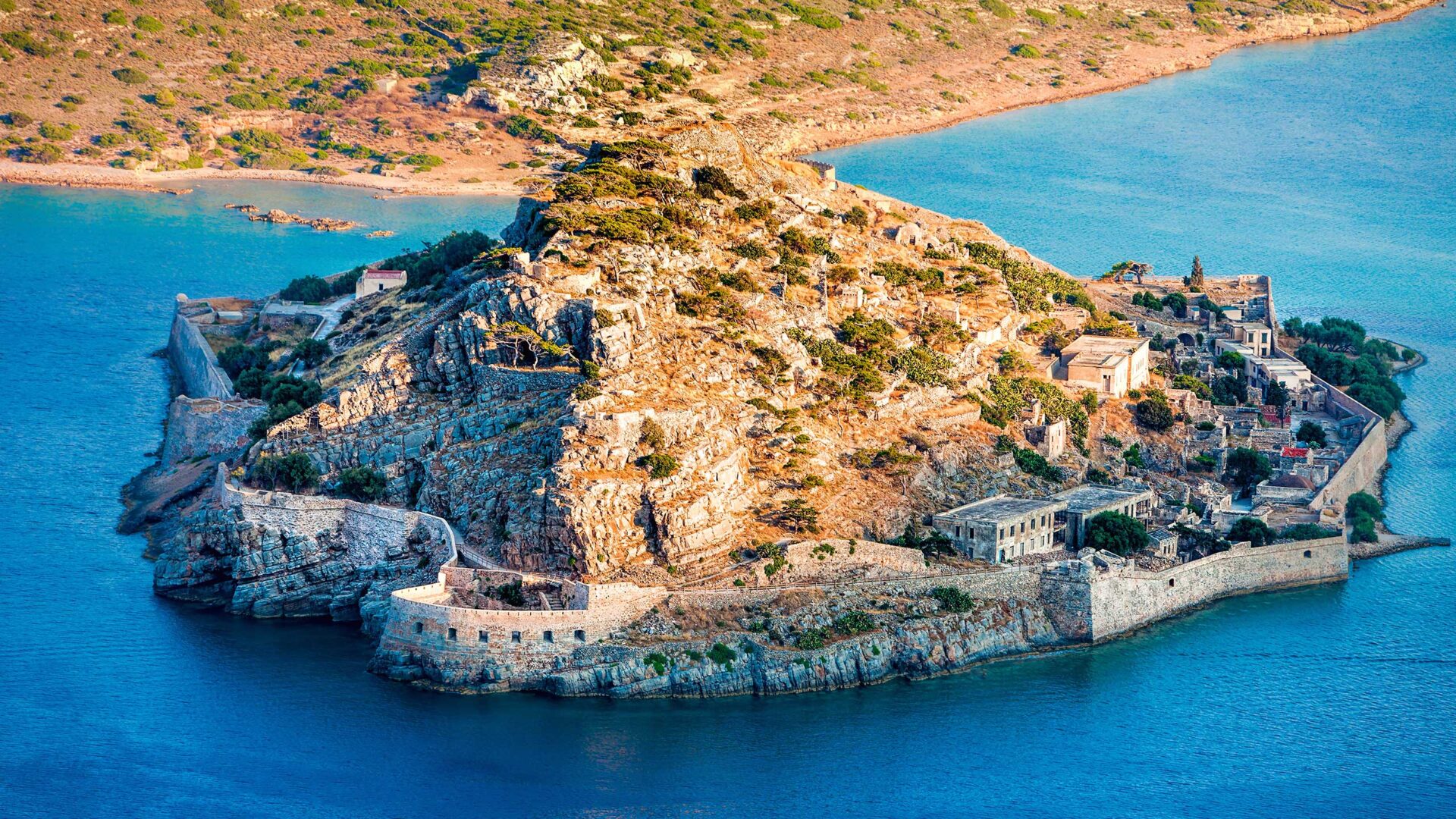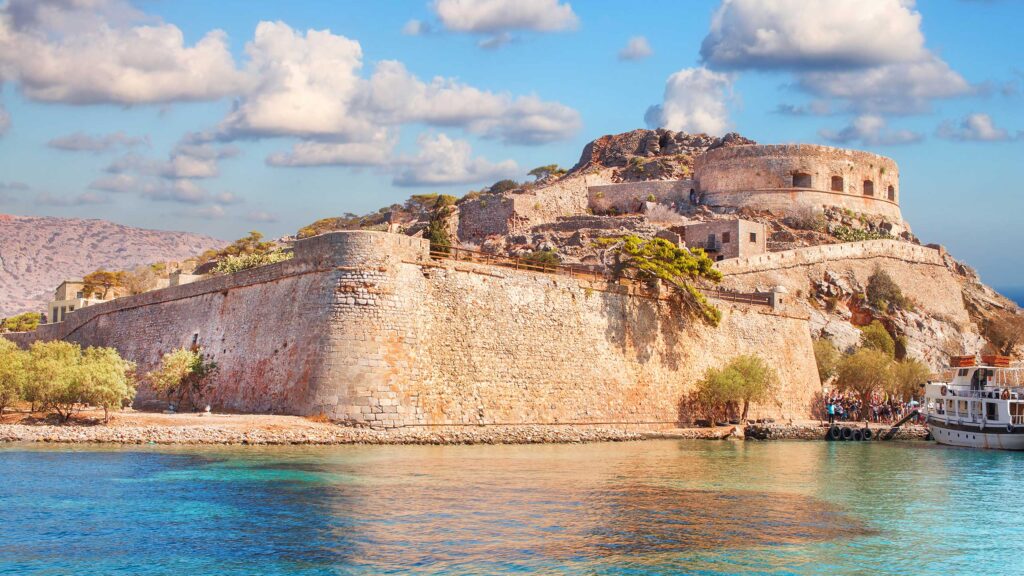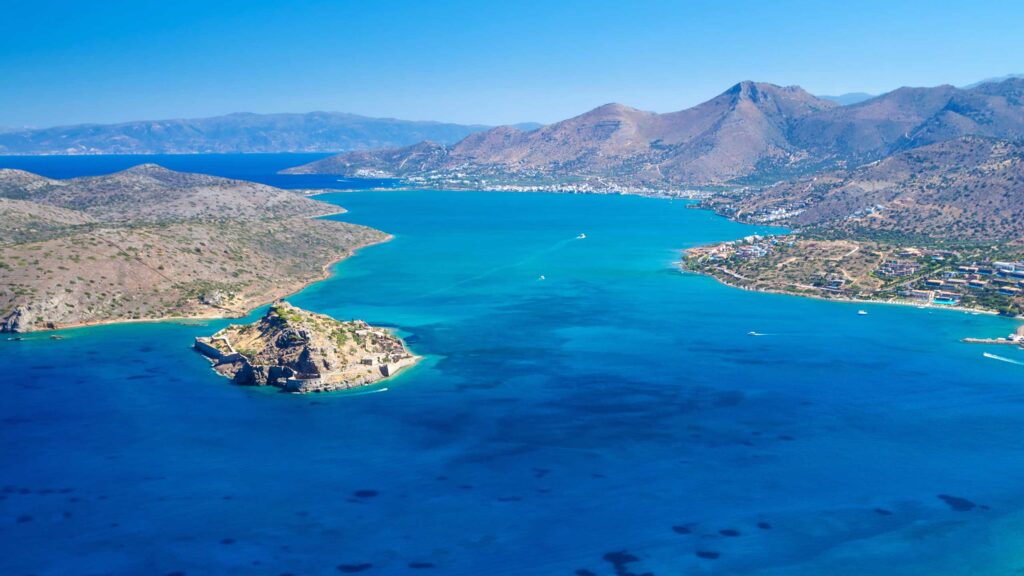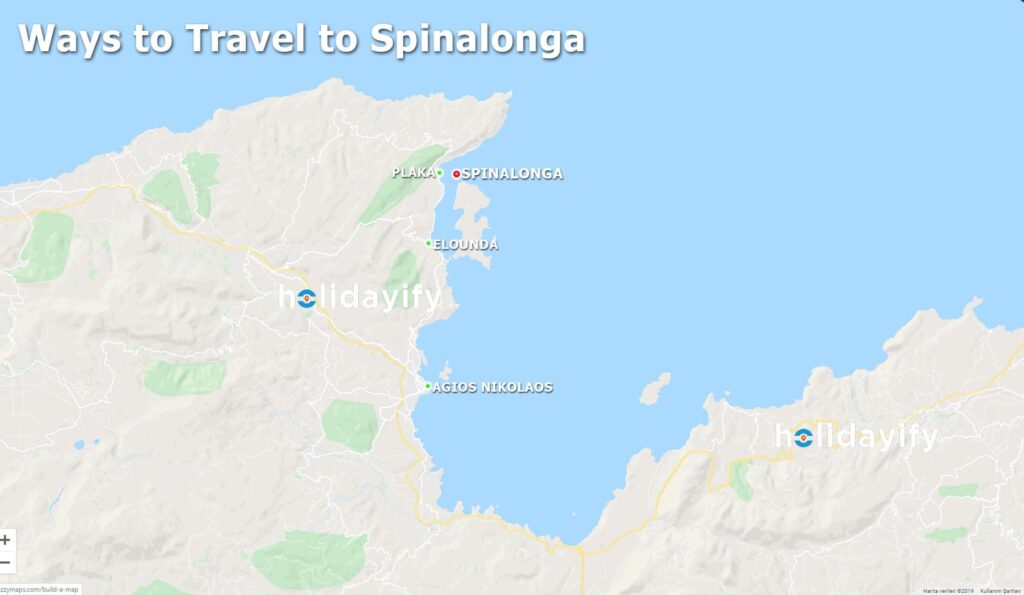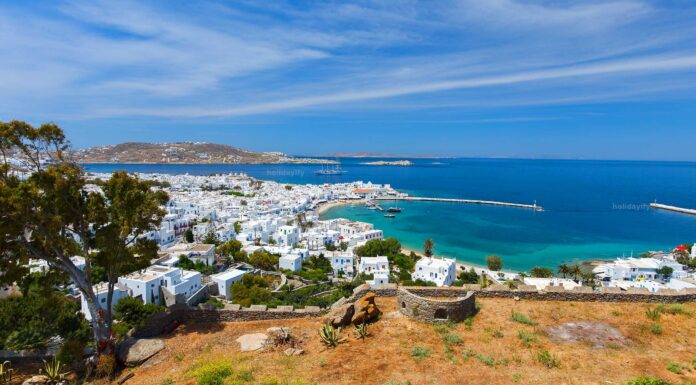Welcome to the captivating tale of Spinalonga Island, a place with a history as intricate and diverse as its stunning landscapes. From being a refuge for those afflicted by leprosy to becoming a thriving tourist hotspot, Spinalonga has undergone an incredible transformation over the centuries. Join us on this journey as we delve into the origins of its name, unravel its rich history through Arab raids, Venetian and Ottoman rule, all the way to its role as a 20th-century leper colony. Discover how this once isolated island is now one of Crete’s most popular destinations, attracting visitors from around the globe.
The Fascinating Story of Spinalonga Island: From Leper Colony to Tourist Hotspot
Once a secluded sanctuary for those banished due to leprosy, Spinalonga Island carries a poignant history that echoes through its ancient walls. Known as “Kalydon” in Greek, the island’s name evolved into “Spinalonga,” meaning “long thorn,” possibly referring to its shape or the spiny sea urchins found in its waters.
Throughout the centuries, Spinalonga bore witness to Arab raids and subsequent periods of Venetian and Ottoman rule before being integrated into Crete during a time of revolt. In the early 20th century, it became home to a thriving leper colony until medical advancements rendered it obsolete.
Today, this once-isolated islet has transformed into a bustling tourist hotspot, attracting visitors eager to explore its well-preserved ruins and immerse themselves in its haunting yet intriguing past. With panoramic views of the Cretan coast and crystal-clear waters surrounding it, Spinalonga stands as a testament to resilience and reinvention.
Overview
Nestled off the coast of Crete lies a small island with a big history – Spinalonga Island. Known for its intriguing past, this picturesque destination has transformed from a leper colony to a thriving tourist hotspot. The journey to Spinalonga is not just about visiting another Greek island; it’s an exploration of resilience and human spirit.
As you step foot on the island, you can’t help but feel captivated by its charm and mystery. From the ancient ruins to the well-preserved buildings, every corner tells a story of survival and strength. The stunning views of the sea surrounding Spinalonga add to its allure, making it a must-visit destination for history buffs and nature lovers alike.
With each visit, travelers are drawn into the rich tapestry of Spinalonga’s past – from Arab raids to Venetian rule, Ottoman occupation to Cretan revolt, and eventually as a 20th-century leper colony. This evolution paints a vivid picture of how this once isolated island has now become a symbol of hope and transformation in modern times.
Origin of the Name
Have you ever wondered how Spinalonga Island got its intriguing name? The origin of the name can be traced back to the Greek words “Stin Elounda,” which means “to the long.” This name likely refers to the shape of the island, which is indeed quite elongated when viewed from a distance.
Another theory suggests that the name could have derived from Italian or Venetian influences during their rule over Crete. In this context, “Spina lunga” translates to “long thorn,” possibly alluding to the island’s isolated and protruding nature in the sea.
Regardless of its exact etymology, one thing is for certain – Spinalonga Island’s unique name adds an air of mystery and allure to this historic destination off the coast of Crete.
History
Spinalonga Island has a rich and storied history that spans centuries. The island’s strategic location made it a coveted prize for various empires throughout the years. It served as a stronghold against Arab raids in the 9th century, providing protection to the region’s inhabitants.
During Venetian rule in the 16th century, Spinalonga became a key defense point against Ottoman advances. The imposing fortifications still standing today are a testament to this turbulent period of conflict and conquest.
Under Ottoman rule, Spinalonga continued its military importance until the Cretan revolt in the early 20th century. The island witnessed fierce battles and changing allegiances as power shifted hands.
In more recent times, Spinalonga gained notoriety as a leper colony from 1903 to 1957. Patients were isolated on the island due to their condition, creating a haunting chapter in its history that is remembered with respect and compassion today.
Arab raids
During the early history of Spinalonga Island, it faced threats from Arab raids in the 9th and 10th centuries. These raids were part of a larger pattern of invasions and conflicts in the region at that time.
The Arab raids were particularly devastating for the island’s inhabitants, as they brought destruction and instability to the area. The attacks caused fear and uncertainty among the local population, leading to a period of turmoil on Spinalonga.
Despite these challenges, Spinalonga managed to endure through resilience and strategic planning. The island’s geographic location played a crucial role in its ability to withstand these external threats over time.
The legacy of Arab raids left an indelible mark on Spinalonga’s history, shaping its development and fortification strategies for centuries to come. Today, visitors can learn about this tumultuous past while exploring the island’s rich cultural heritage.
Venetian rule
In the 15th century, Spinalonga came under Venetian rule as a strategic stronghold in the Mediterranean. The Venetians fortified the island with robust walls and watchtowers to protect against potential invaders. Their presence brought about a period of prosperity for Spinalonga, with trade flourishing and the island becoming an important hub for commerce in the region.
During this time, Spinalonga served as a vital link in Venetian maritime routes, connecting Crete to other territories under their control. The Venetians utilized the island’s strategic location to exert influence over sea trade and maintain dominance in the area. Their rule left a lasting architectural legacy on Spinalonga, evident in the remnants of fortifications that still stand today.
Despite facing challenges such as pirate raids and political unrest during their rule, the Venetians managed to maintain control of Spinalonga for several centuries before eventually ceding it to Ottoman forces in 1715.
Ottoman rule
During the Ottoman rule, Spinalonga Island played a strategic role in the region due to its location and natural defenses. The Ottomans used the island as a fortress to control the surrounding sea routes and protect their territories from invasions. With its imposing walls and watchtowers, Spinalonga became an essential stronghold for the Ottomans in their efforts to maintain dominance over Crete.
Under Ottoman rule, Spinalonga also served as a place of exile for political prisoners and dissidents. The island’s isolated location made it an ideal spot for keeping individuals deemed threats to the empire away from mainland society. This period marked a dark chapter in Spinalonga’s history, with stories of hardship and suffering echoing through its rocky terrain.
Despite its somber past during Ottoman rule, Spinalonga Island has since transformed into a symbol of resilience and hope, attracting visitors from around the world to explore its rich heritage intertwined with layers of history.
Cretan revolt
During the Cretan revolt, Spinalonga played a crucial role in the island’s history. The local population rebelled against Ottoman rule, seeking independence and autonomy. This uprising led to intense fighting and bloodshed throughout Crete. As tensions escalated, many Cretans sought refuge on Spinalonga due to its strategic location and natural defenses.
The island became a stronghold for the rebels, allowing them to resist Ottoman forces for an extended period. Despite facing immense challenges and hardships, the Cretans displayed remarkable resilience and determination in their fight for freedom. The events of the revolt left a lasting impact on the people of Crete, shaping their identity and fueling their desire for self-governance.
Today, visitors can explore remnants of this tumultuous time on Spinalonga Island, gaining insight into the courage and spirit of those who fought for liberty.
20th-century leper colony
In the early 20th century, Spinalonga Island became a leper colony, serving as a place of exile for those afflicted with Hansen’s disease. The isolated location provided a sense of containment and safety for the residents while keeping them away from the general population on Crete.
The leper colony on Spinalonga operated until 1957 when advancements in medical treatment rendered it unnecessary. During its years as a leper colony, patients were cared for by doctors and nuns who dedicated their lives to providing comfort and support to those living with the disease.
Despite its somber past, the island’s history as a leper colony serves as a reminder of human resilience and compassion in times of adversity. Today, visitors can explore the remnants of this period, including abandoned buildings that once housed patients seeking refuge on Spinalonga Island.
When did the last leper leave Spinalonga?
From 1948 onwards, when the cure for this dreadful disease was discovered, the number of lepers on Spinalonga fell. The Leper Hospital remained operational until 1957, when the last 20 patients were moved to a leper hospital in Athens.
Spinalonga Today
Spinalonga Island, once a leper colony shrouded in sadness and isolation, has now transformed into a vibrant tourist hotspot. Visitors flock to this small island off the coast of Crete to explore its fascinating history and picturesque surroundings.
Today, Spinalonga offers a unique blend of historical significance and natural beauty. The well-preserved ruins of the former leper colony stand as a poignant reminder of the island’s past, while the stunning views of the Aegean Sea provide a breathtaking backdrop for visitors.
Tourists can wander through the narrow streets lined with abandoned stone houses, visit the old hospital where patients were treated, and learn about the lives of those who once called Spinalonga home. A trip to Spinalonga is not just a journey through history but also an opportunity to appreciate the resilience and strength of those who lived on the island.
With its rich cultural heritage and scenic charm, Spinalonga continues to captivate travelers from around the world. Whether you’re interested in history, architecture, or simply enjoying stunning views by the sea, a visit to Spinalonga promises an unforgettable experience.
In Popular Culture
Spinalonga Island has captured the imagination of many artists and storytellers, making its mark in popular culture. The novel “The Island” by Victoria Hislop brought international attention to Spinalonga’s history as a leper colony. This best-selling book shed light on the island’s past and contributed to its popularity among tourists seeking to learn more about its haunting yet intriguing story.
Moreover, Spinalonga was featured in the Greek television series “To Nisi,” further cementing its place in modern media. The island’s unique blend of historical significance and natural beauty has also attracted filmmakers looking for a captivating backdrop for their projects.
From books to TV shows and movies, Spinalonga Island continues to inspire creative works that showcase its rich history and scenic charm, ensuring that its legacy lives on in popular culture for years to come.
Top Sights near Spinalonga
When visiting Spinalonga Island, don’t miss out on exploring the enchanting surroundings that offer a captivating glimpse into Crete’s history and culture. Just a short boat ride away from Spinalonga lies the charming village of Plaka, where you can wander through narrow streets lined with traditional tavernas and shops selling local handicrafts.
For those seeking more historical sites, a visit to the ancient city of Olous is a must. Located near Elounda, this archaeological site dates back to Minoan times and provides insight into the island’s rich past. Nature enthusiasts will find solace in the nearby Kri-Kri Island – a protected nature reserve home to diverse flora and fauna.
To experience stunning views of the Gulf of Mirabello, head to the historic windmills perched atop Kroustas Hill. These iconic structures offer an ideal spot for panoramic photos and peaceful moments overlooking the tranquil waters below.
How do I get from Crete to Spinalonga?
To reach the captivating Spinalonga Island, visitors have a few transportation options to choose from. The island is accessible by boats departing from Plaka, Elounda, and Agios Nikolaos on the northeastern coast of Crete. These boat trips offer stunning views of the Aegean Sea and take around 15-20 minutes to reach the island.
Plaka is a charming fishing village where most boat tours depart for Spinalonga. Its picturesque harbor adds to the experience of embarking on this historical journey. Elounda, another starting point for boat excursions, offers a more upscale setting with luxury resorts and crystal-clear waters surrounding it.
Agios Nikolaos is also a popular departure spot due to its bustling atmosphere and proximity to Spinalonga. Visitors can easily find tour operators in these coastal towns offering guided trips that provide insightful commentary on the island’s rich history.
Getting to Spinalonga Island is an enjoyable part of exploring this unique destination in Crete.
When to Go
When planning your visit to Spinalonga Island, it’s essential to consider the best time to go. The ideal period to explore this historical gem is during the spring and autumn months when the weather is mild, and the crowds are fewer. During these seasons, you can enjoy pleasant temperatures and avoid the scorching heat of summer or the chilly winter winds.
Springtime on Spinalonga brings blooming wildflowers dotting the landscape, creating a picturesque backdrop for your exploration. Autumn offers a similar charm with cooler temperatures perfect for wandering around without feeling overheated. If you prefer a quieter experience, weekdays are generally less crowded compared to weekends when day-trippers flock to see this unique destination.
No matter when you choose to visit Spinalonga Island, each season has its own appeal and beauty waiting to be discovered amidst its rich history and stunning vistas.
Duration & Tickets
[adning id=”202″]
Planning a visit to Spinalonga Island? The duration of your trip will depend on how much time you want to spend exploring this historical gem. Typically, visitors spend around 1-2 hours on the island, but you can stay longer if you wish.
When it comes to tickets, make sure to purchase them in advance to avoid any disappointment. Ticket prices may vary depending on the season and any special events happening on the island. Be sure to check the official website for up-to-date information on ticket prices and availability.
Guided tours are available for those who want a more in-depth experience and insight into the history of Spinalonga. These tours can provide valuable context and stories that bring the island’s past to life.
Remember to factor in transportation time when planning your visit. Ferries run regularly from nearby towns like Plaka and Elounda, so be sure to check the schedule beforehand. Enjoy your journey back in time as you explore Spinalonga Island!
Prices for the boat trip to Spinalonga
- From Agios Nikolaos to Spinalonga: 25 € per person
- From Elounda to Spinalonga: 10€ per person for adults | 5€ for children of 5-11 years old
- From Plaka to Spinalonga: 8 € per person
- This price does not include the cost of the entrance ticket to the Spinalonga archaeological site, which was 8 – 10 € in 2024.
Good to Know
When visiting Spinalonga Island, it’s essential to wear comfortable shoes as the terrain can be rocky and uneven. Don’t forget to bring sunscreen and a hat, as there is limited shade on the island. It’s also advisable to carry water with you, especially during hot summer days.
Keep in mind that there are no restaurants or shops on Spinalonga Island, so packing some snacks or a picnic lunch is recommended. Remember to dispose of your trash responsibly by taking it back with you when leaving the island.
To fully enjoy your visit, consider hiring a local guide who can provide valuable insights into the history and significance of Spinalonga. Respect any signs or guidelines provided on the island to help preserve its natural beauty for future generations to appreciate.
Responsible Travel
Responsible travel is essential when visiting destinations like Spinalonga Island. As a tourist hotspot with a rich history, it’s crucial to be mindful of the island’s past and its significance to those who lived there. When exploring Spinalonga, respect the area by not littering or damaging any historical sites.
Support local businesses and communities by purchasing souvenirs or dining at nearby establishments. By contributing to the local economy, you help preserve the cultural heritage of the region. Additionally, consider reducing your environmental impact during your visit.
Choose eco-friendly transportation options when traveling to and from Spinalonga. Be conscious of conserving water and energy while on the island. Remember that responsible travel not only benefits the environment but also ensures that future generations can continue to enjoy this unique destination in its natural beauty.
Where to stay near Spinalonga Island, Crete
The island of Spinalonga has an interesting history, but also there are many beautiful beaches around it. We have collected budget-friendly hotels for you here. Where to stay closest to Spinalonga? Here the 10 closest Hotels to Spinalonga island, Elounda, Crete. You may make reservation with best prices from booking.com search and have it.
